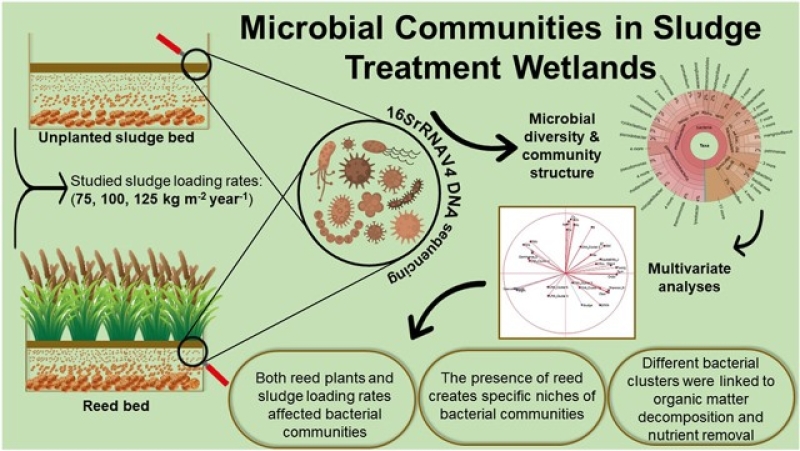- Inqilab Monch Seeks Home Adviser’s Exit |
- UN Calls for Calm in Bangladesh After Protest Leader’s Killing |
- DMP issues 7 traffic directives for Osman Hadi’s Janaza |
- Vested quarter fuelling chaos to impose new fascism: Fakhrul |
- Hadi’s namaz-e-janaza at 2:30pm Saturday |
Reeds Beds Offer Sustainable Sludge Treatment

How reeds beds sustainably treat sludge
Reed beds have significant potential as a treatment and management process for sludge derived from wastewater, according to a study by researchers from Sultan Qaboos University.
Sustainable methods for treating wastewater sludge
Residual sludge, leftover from wastewater treatment, contains high levels of nutrients and chemicals that are hazardous and pose both environmental and health risks if they are not treated and managed properly.
With traditional methods coming under scrutiny for their energy-intensive, chemically-driven, poor sustainability credentials, researchers are turning their attention to alternative treatments, such as those provided by nature-based solutions.
The team from Sultan Qaboos University turned their attention to reed beds in a series of trials to test their ability to both stabilise the sludge and break down any pollutants. The results of their findings were published in Soil and Environmental Health.
Testing with three sludge loading rates
Sludge-treatment reed beds (STRBs) are widely recognised as a cost-effective, highly efficient, and environmentally friendly solution for sludge treatment and dewatering.
In this study, the researchers evaluated the performance of reed beds under three different sludge loading rates: 75, 100, and 125 kg/m²/year. Previous studies demonstrated that reeds beds are excellent at breaking down pollutants. The current research focused on microbial diversity, sludge decomposition efficiency, and overall treatment effectiveness, based on the different rates of loading.
In total, the trial consisted of 18 beds filled with substrate media arranged in the following order: 15 cm of fine gravel (2-6 mm), 15 cm of medium gravel (15-25 mm), and a 5 cm drainage layer of cobbles (40-60 mm). The physical characteristics of the beds differed slightly, with a control bed containing only substrate. Nine of the beds featured reeds (Phragmites australis), while the remained contained no reeds.
The team used 16S rRNA sequencing techniques to identify key microbial species responsible for nutrient removal and organic matter stabilisation.
Why do reeds have such potential for sludge treatment?
The structure of reeds provides niche habitats that promote the growth of specific species of microbes, while excluding others. The plants also promote higher oxygen levels, in which aerobic bacteria thrive. The metabolic capabilities and preferences of these bacteria help to accelerate a decrease in organic loads, compared to the control beds, which had less oxygen available.
The researchers found that proteobacteria emerged as the dominant microbial group. These helped to drive critical carbon and nitrogen cycles in the reed beds.
Dense root systems also represent a natural filtration system and when combined with the above properties, reeds are particularly efficient at pollutant removal and decomposition of organic matter, such as nutrients and suspended solids.
Conclusions and areas for future research
The researchers concluded that sludge treatment reed beds (STRB) offer a sustainable and environmentally friendly approach to sludge management. Not only are they easily scalable, but they also negate the need for chemically-driven, energy-intensive processes.
The STRBs achieved up to a 98 per cent reduction in sludge volume, with optimal performance observed at a loading rate of 100 kg/m²/year.
The report stated: “Future research can build upon these findings to explore novel approaches for enhancing pollutant removal and ecosystem services in sludge treatment systems, ultimately advancing sludge management and environmental preservation efforts.”
It suggested five areas for future research:
• Exploration of different plant species in similar systems
• Testing extreme sludge rates
• Exploring the role of fungi in STRB
• Exploring greenhouse gas emission responses and other sustainability aspects
• Researching the economic viability of STRB under different scenarios.
Aqua Tech Newsletter - Thursday, 16 January 2025

